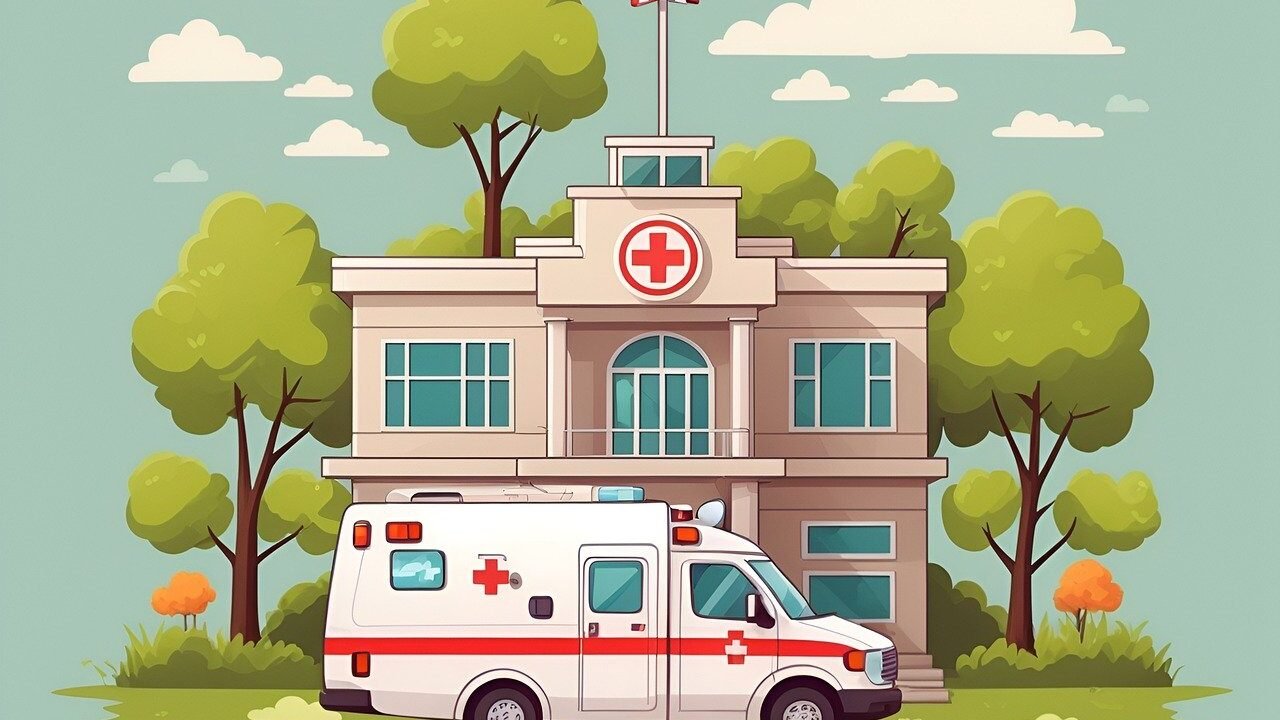How does healthcare work in the US? Understanding this question is essential for navigating the complexities of medical care and insurance in America. The US healthcare system is multifaceted, involving a mix of public and private insurance options, varying levels of care access, and complex cost structures. Whether you’re new to the system or seeking to optimize your current healthcare strategy, this guide will provide a clear overview of how the US healthcare system operates, including key elements like insurance types, cost factors, and access to care. By the end of this post, you’ll have a better grasp of how to effectively manage your healthcare in the US.
US Healthcare System
The US healthcare system was built into a complicated network of public /private providers, insurers, and programs that work together to deliver some medical benefits to the population.
The US does not have a universal healthcare system, as do many other developed countries; and what healthcare one has access to varies greatly from person to person.
It helps you to understand the employment-based US healthcare system and by exposing it, it makes more sense as far as navigating through your options made available to help have an informed decision in regards to how to possibly plan your care up to certain procedures.
Public vs. private Healthcare ⋯
US healthcare is split into two domains, public and private.
The public sector is the segment of an economic system that is controlled by the state, region, or political party and funded through central government spending a variation; which allocates capital there for both services are available to all one would expect, but instead experience long wait times exist due healthcare being rationed among should have access.
common good goods Public Services FUNFARENAMEDIA ORG.

Health Insurance and Coverage
One of the leading aspects in which health insurance affects US healthcare system is how it pays for medical services. Hospital insurance can be very different in terms of what they cover, how much you pay and who the network providers are. The ACA was largely designed as an attempt to broaden access, including by subsidizing the cost of coverage and providing protections for people with preexisting health conditions.
Access to Healthcare Services
In the US, geographic location, insurance coverage, and socioeconomic status exert a powerful influence on access to healthcare services. At the urban level, there are higher healthcare facilities and human resources in comparison to rural settings that face a lack of doctors or where people have to travel more distance to hospitals.
Public vs Private Healthcare
When comparing public vs private healthcare, it’s essential to understand the fundamental differences between these two systems. Each has its benefits and challenges, influencing how individuals access medical services and manage their health.
Public Healthcare
Public healthcare is funded and managed by the government.
It aims to provide healthcare services to all citizens regardless of their ability to pay.
This system is often financed through taxation, and the government regulates the quality and accessibility of services.
Key Features of Public Healthcare:
- Funding: Public healthcare is funded by taxpayers.
- This means that services are typically free or low-cost at the point of use.
- Accessibility: Designed to be accessible to everyone, public healthcare systems prioritize universal coverage. This often includes emergency care, routine check-ups, and preventive services.
- Wait Times: One downside can be longer wait times for certain procedures and treatments, as resources are allocated to accommodate the entire population.
- Equity: Public healthcare aims to provide equal care to all individuals, promoting health equity across different socioeconomic groups.

Private Healthcare
Private healthcare operates independently of government funding. It is financed through private payments, insurance plans, or employer-sponsored health benefits.
Private providers often offer more flexibility and additional services compared to public systems.
Key Features of Private Healthcare:
- Funding: Funded by private payments, health insurance, or employer contributions. Services are typically billed directly or covered through insurance plans.
- Accessibility: Offers quicker access to specialized treatments and elective procedures. Patients often experience shorter wait times and more personalized care.
- Cost: Generally more expensive than public healthcare, as costs are borne by the patient or their insurer. This can limit accessibility for some individuals.
- Choice: Provides more choices in healthcare providers and facilities. Patients often have the freedom to select their doctors and treatment options.
Comparing Public and Private Healthcare
When considering public vs private healthcare, individuals may weigh factors such as cost, accessibility, and quality of care. Public systems aim to serve the entire population with limited costs at the point of use, while private systems offer more rapid access and personalized services at a higher cost.
Understanding these differences helps individuals make informed choices about their healthcare options and navigate the system that best meets their needs.
Whether opting for public or private care, each system plays a crucial role in the overall healthcare landscape.
Health Insurance and Coverage
Health insurance and coverage are critical components of accessing and managing healthcare. Understanding how health insurance works and what types of coverage are available can help you make informed decisions about your healthcare needs.
What is Health Insurance?
Health insurance is a contract between an individual and an insurance company that provides financial protection against medical costs. By paying regular premiums, individuals gain access to a range of healthcare services with reduced out-of-pocket expenses.
Key Features of Health Insurance:
- Premiums: The amount paid regularly (monthly or annually) to maintain the insurance coverage.
- Deductibles: The amount you must pay out-of-pocket before the insurance starts covering expenses.
- Copayments and Coinsurance: Copayments are fixed amounts paid for specific services, while coinsurance is a percentage of costs shared with the insurer after deductibles are met.
- Coverage Limits: The maximum amount an insurance policy will pay for covered services. Be aware of limits on both annual and lifetime coverage.

Types of Health Insurance Coverage
Health insurance coverage can vary significantly, offering different levels of protection and types of care.
Here’s a look at some common types of health insurance coverage:
- Individual and Family Plans: These plans cover either an individual or a family and can be purchased through government marketplaces or private insurers. They generally cover a broad range of services, including preventive care, hospitalization, and prescription drugs.
- Employer-Sponsored Insurance: Many people receive health insurance through their employer.
- These plans often offer comprehensive coverage at a lower cost compared to individual plans due to the employer’s contribution.
- Government Programs:
- Medicare: A federal program primarily for individuals aged 65 and older, and for some younger individuals with disabilities. Medicare offers various coverage options, including hospital insurance (Part A) and medical insurance (Part B).
- Medicaid: A state and federal program that provides health coverage for low-income individuals and families. Eligibility and benefits can vary by state.
- Short-Term Health Insurance: Designed for temporary coverage, this type of insurance can be useful for bridging gaps in coverage but may offer limited benefits and have higher out-of-pocket costs.
- Catastrophic Plans: These plans are designed for young, healthy individuals and provide coverage for worst-case scenarios, such as serious accidents or illnesses, with lower premiums and higher deductibles.
Choosing the Right Health Insurance Plan
When selecting a health insurance plan, consider the following factors:
- Coverage Needs: Assess your healthcare needs, including routine check-ups, specialist care, and prescription medications.
- Budget: Evaluate your budget for premiums, deductibles, and out-of-pocket expenses to find a plan that balances cost and coverage.
- Network: Check if your preferred healthcare providers and facilities are included in the plan’s network to avoid higher costs.
Understanding health insurance and coverage is crucial for managing your healthcare effectively and ensuring you have access to the services you need.
By carefully evaluating your options, you can select a plan that offers the right balance of coverage and cost for your specific situation.
Prescription Drug Coverage
Prescription drug coverage is an essential component of health insurance that helps manage the cost of medications. Understanding how prescription drug coverage works can help you make informed decisions about your health care and manage your medication expenses effectively.
What is Prescription Drug Coverage?
Prescription drug coverage refers to the part of your health insurance plan that helps pay for prescription medications. This coverage is designed to reduce the out-of-pocket costs for drugs prescribed by your healthcare provider.
Key Features of Prescription Drug Coverage:
- Formulary: A list of covered drugs that insurance plans use to determine which medications are eligible for coverage. Formulary lists are typically categorized into tiers, with different costs associated with each tier.
- Deductibles: Some plans may have a deductible that needs to be met before prescription drug coverage kicks in. This means you pay the full cost of your medications until you reach the deductible amount.

Types of Prescription Drug Coverage
Prescription drug coverage can vary depending on the type of health insurance plan you have:
- Employer-Sponsored Plans: These plans often include prescription drug coverage as part of a comprehensive benefits package. Check the specifics of your plan’s formulary and cost-sharing requirements.
- Medicare Part D: Medicare offers prescription drug coverage through Part D plans. These plans are available from private insurers and help cover the cost of prescription medications. Coverage and costs can vary by plan, so it’s important to compare options.
- Medicaid: Medicaid often includes prescription drug coverage for eligible low-income individuals and families. Each state may have different formularies and coverage rules.
- Individual Health Insurance Plans: Plans purchased through the marketplace or directly from insurers typically include prescription drug coverage, but formulary and cost structures can differ.
How to Maximize Your Prescription Drug Coverage
To make the most of your prescription drug coverage, consider the following tips:
- Use Mail-Order Services: If your plan offers mail-order services for medications, this can often result in cost savings and convenience for long-term prescriptions.
- Consult Your Healthcare Provider: If you are prescribed a medication not covered by your plan, discuss alternative treatments or drugs with your healthcare provider that may be covered.
Preventive Care and Wellness
Preventive care and wellness are essential components of maintaining good health and preventing the onset of diseases. Emphasizing preventive care can help you avoid serious health issues, manage chronic conditions effectively, and improve your overall quality of life.
What is Preventive Care?
Preventive care refers to medical services and strategies designed to prevent illnesses and detect health issues early before they become serious. The goal is to promote health and well-being through proactive measures rather than reactive treatments.
Key Aspects of Preventive Care:
- Routine Screenings: Regular check-ups and screenings are crucial for identifying potential health problems early. Common screenings include blood pressure checks, cholesterol tests, cancer screenings (such as mammograms and colonoscopies), and diabetes tests.
- Vaccinations: Immunizations protect against various infectious diseases. Routine vaccines for children, adults, and older adults help prevent diseases like measles, flu, pneumonia, and shingles.
- Health Counseling: Preventive care often includes counseling on lifestyle changes, such as quitting smoking, reducing alcohol consumption, and adopting a healthier diet and exercise routine.

What is Wellness?
Wellness encompasses a holistic approach to health that includes physical, mental, and emotional well-being. It focuses on achieving a balanced lifestyle through healthy habits and self-care practices.
Key Components of Wellness:
- Healthy Eating: A balanced diet rich in fruits, vegetables, whole grains, lean proteins, and healthy fats supports overall health and can prevent many chronic diseases.
- Regular Exercise: Physical activity helps maintain a healthy weight, improves cardiovascular health, boosts mood, and enhances overall fitness. Aim for at least 150 minutes of moderate-intensity exercise per week.
- Stress Management: Effective stress management techniques, such as meditation, deep breathing exercises, and hobbies, contribute to mental and emotional well-being.
- Adequate Sleep: Quality sleep is essential for physical and mental health. Aim for 7-9 hours of sleep per night to support optimal functioning and recovery.
The Role of Technology in Healthcare
The role of technology in healthcare has transformed the medical field, enhancing patient care, improving diagnostic accuracy, and streamlining healthcare operations.
Technological advancements are reshaping how healthcare is delivered, making it more efficient, accessible, and personalized.
How Technology is Transforming Healthcare
Technology in healthcare encompasses a wide range of tools and innovations that improve various aspects of medical practice and patient management. Here are some key areas where technology is making a significant impact:
- Electronic Health Records (EHRs): EHR systems have revolutionized how patient information is stored and accessed. They allow for the digital documentation of patient history, lab results, and treatment plans, facilitating better coordination among healthcare providers and improving the accuracy of medical.
- Telemedicine: Telemedicine enables remote consultations between patients and healthcare providers through video calls, phone calls, or online messaging.
- This technology improves access to care, especially for individuals in remote or underserved areas, and offers convenience for managing
- Wearable Technology: Devices such as fitness trackers, smartwatches, and continuous glucose monitors provide real-time health data, helping individuals track their physical activity, heart rate, and glucose levels. Wearable technology supports preventive care and chronic disease management
- Artificial Intelligence (AI) and Machine Learning: AI and machine learning algorithms are being used to analyze large datasets, predict patient outcomes, and assist in diagnostic processes. These technologies help identify patterns and make predictions that enhance decision-making and
- Robotic Surgery: Robotic-assisted surgical systems allow for greater precision and control during operations. These systems offer minimally invasive
Benefits of Technology in Healthcare
The role of technology in healthcare brings numerous benefits, including:
- Improved Patient Care: Technology enhances the quality of care by enabling accurate diagnostics, personalized treatments, and continuous monitoring of patient health.
- Increased Efficiency: Automation and digital tools streamline administrative tasks, reduce paperwork, and minimize errors, leading to more efficient healthcare delivery.
- Enhanced Accessibility: Telemedicine and mobile health apps make it easier for patients to access care, regardless of their location or mobility.
- Data-Driven Insights: Advanced analytics and AI provide valuable insights into health trends, helping healthcare providers make informed decisions.
Challenges and Considerations
While technology in healthcare offers many benefits, it also presents challenges such as data privacy concerns, the need for cybersecurity, and the potential for technology-related errors.
Ensuring proper implementation, training, and safeguarding of patient information is crucial for maximizing the benefits of technological advancements.
The Future of Healthcare in the US
The future of healthcare in the US is a topic of significant interest and debate, shaped by evolving technologies, policy changes, and shifting patient needs.
As the healthcare landscape continues to change, several key trends and innovations are expected to play a major role in shaping how care is delivered and accessed.
Key Trends Shaping the Future of Healthcare
- Increased Use of Technology: Technology is set to revolutionize the healthcare industry further.
- Innovations such as telemedicine, artificial intelligence (AI), and wearable health devices are expected to enhance patient care, improve diagnostic accuracy, and make healthcare more accessible.
- Personalized Medicine: Advances in genomics and biotechnology are driving the shift toward personalized medicine.
- This approach tailors medical treatments to individual genetic profiles, leading to more effective and targeted therapies for various conditions.
- Value-Based Care: The healthcare system is moving towards value-based care models, where providers are rewarded for delivering high-quality care and improving patient outcomes rather than the volume of services. This shift aims to enhance the efficiency and effectiveness of healthcare delivery.
- Expansion of Telehealth: The use of telehealth services is expected to continue growing, offering remote consultations, virtual therapy, and digital health monitoring. This expansion aims to increase access to care, particularly for rural and underserved populations.
- Healthcare Integration and Coordination: The future will likely see more integration across various healthcare services, including primary care, specialty care, and mental health services.
- Coordinated care models are designed to improve patient experiences and outcomes by ensuring all aspects of care are well-integrated.
- Focus on Mental Health: There is a growing recognition of the importance of mental health in overall wellness. Future healthcare strategies will likely place a greater emphasis on mental health services, integrating them more fully with physical health care.

Challenges and Considerations
While the future of healthcare in the US promises many advancements, it also faces several challenges:
- Healthcare Costs: Managing the rising costs of healthcare while ensuring access and affordability for all remains a significant challenge. Efforts to control costs and improve efficiency will be critical.
- Data Privacy and Security: As healthcare technology advances, ensuring the privacy and security of patient data becomes increasingly important. Implementing robust cybersecurity measures will be essential to protect sensitive health information.
- Health Disparities: Addressing disparities in healthcare access and outcomes among different populations will be crucial for achieving equity in the future healthcare system.
- Efforts to reduce these disparities will need to be a focus of future healthcare policies.
Table of Contents
Conclusion
In summary, how does healthcare work in the US? The US healthcare system is characterized by its blend of public and private insurance options, diverse healthcare providers, and complex cost structures. By understanding the different types of coverage—such as employer-sponsored insurance, government programs like Medicare and Medicaid, and individual market plans—you can make more informed decisions about your healthcare.
Navigating this system involves recognizing the nuances of insurance policies, costs, and access to care. Whether it’s leveraging preventive services to maintain wellness, utilizing technology for better health management, or staying informed about regulatory changes, being proactive and knowledgeable can greatly enhance your healthcare experience.
As the US healthcare landscape continues to evolve, staying updated on new developments and understanding your options will be key to effectively managing your health. By familiarizing yourself with how the system works, you can better advocate for your needs and make the most of the resources available to you.



